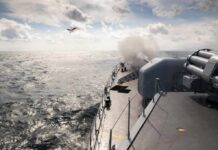
American hero Conrad “Gus” Shinn, the first pilot to land an airplane at the South Pole in 1956, has passed away at age 102, leaving behind a legacy that transformed polar exploration and scientific research.
At a Glance
- Lt. Cmdr. Conrad “Gus” Shinn died on May 15 in Charlotte, N.C., at the age of 102
- Shinn made history on October 31, 1956, as the first pilot to land an airplane at the South Pole
- His historic South Pole landing lasted just 49 minutes and required small rockets to take off from the ice
- Shinn’s aviation achievements during Operations Highjump and Deep Freeze helped open Antarctica to scientific research
- The decorated Navy pilot previously served in World War II, airlifting combat casualties in the Pacific
A Pioneering Aviator’s Final Flight
Conrad “Gus” Shinn, a naval aviator whose historic landing at the South Pole helped transform scientific exploration in Antarctica, passed away on May 15 in Charlotte, North Carolina. Shinn, who had lived in Pensacola, Florida since retiring from the Navy in 1963, was 102 years old. His groundbreaking 1956 flight to the southernmost point on Earth opened up one of the planet’s most inaccessible regions to researchers and bolstered American strategic interests during the height of the Cold War.
The historic South Pole landing on October 31, 1956, was brief but monumental. Shinn’s Navy plane spent only 49 minutes on the ground, and the takeoff required small rockets to lift the aircraft from the ice. This pioneering flight demonstrated that air transportation could support scientific operations in even the most extreme environments, fundamentally changing how research would be conducted in Antarctica for generations to come.
From World War II to Antarctic Exploration
Shinn’s remarkable career began during World War II, where he served with distinction airlifting combat casualties throughout the Pacific theater. The dangerous missions to evacuate wounded servicemen demonstrated his exceptional flying skills and commitment to duty. After the war, Shinn found himself assigned to a naval air station in Washington, D.C., but the routine nature of the posting left him seeking more challenging and adventurous assignments.
His quest for adventure led him to participate in two landmark Antarctic expeditions. Operation Highjump (1946-1947) and Operation Deep Freeze (1955-1958) involved extensive photographic mapping missions over Antarctica. These operations were crucial for establishing logistical routes and infrastructure that would support future scientific research on the continent. Shinn’s contributions to these missions helped transform Antarctica from an uncharted frontier to a hub of international scientific collaboration.
A Lasting Legacy in Polar Exploration
The impact of Shinn’s historic South Pole landing extended far beyond the brief 49 minutes his aircraft spent on the ice. His flight demonstrated that aviation could provide reliable support for scientific research in even the most inhospitable environments on Earth. This breakthrough fundamentally changed how large-scale scientific studies could be conducted in isolated regions, opening up new possibilities for geographic and meteorological research that continue to this day.
Shinn’s dedication to safe aviation practices in extreme conditions helped establish protocols that would protect future generations of pilots and researchers working in polar regions. His pioneering spirit and technical expertise facilitated a new era of scientific discovery at the South Pole, where researchers now maintain year-round presence at advanced research stations, studying everything from climate change to astrophysics.
Conrad “Gus” Shinn’s legacy lives on in the vibrant scientific community that continues to work at the South Pole, building upon the foundation he helped establish through his historic flight more than six decades ago. His passing marks the end of an era in polar exploration, but his contributions to aviation and science will continue to influence expeditions to Earth’s most extreme environments for generations to come.

























